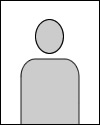Stability of doxycycline in feed and water and minimal effective doses in tetracycline-inducible systems Journal Article
| Authors: | Redelsperger, I. M.; Taldone, T.; Riedel, E. R.; Lepherd, M. L.; Lipman, N. S.; Wolf, F. R. |
| Article Title: | Stability of doxycycline in feed and water and minimal effective doses in tetracycline-inducible systems |
| Abstract: | Despite the extensive use of doxycycline in tetracycline-inducible rodent models, little is known regarding its stability in feed or water or the most effective route or dose. We assessed the concentrations of doxycycline in reverse-osmosis-purified (RO; pH 6.0) and acidified RO (pH 2.6) water in untinted or green-tinted bottles. Doxycycline remained stable in all groups for 7 d and in acidified water in untinted bottles for 14 d. Fungal growth occurred in nonacidified water in tinted and untinted bottles by 12 and 14 d, respectively, and in tinted bottles containing acidified water on day 14, but not in untinted bottles with acidified water. Doxycycline concentrations were also assessed before and at various points after the pelleting of feed from 2 vendors. Each batch was divided for storage at 4 °C, at room temperature, or within ventilated mouse isolator cages and then sampled monthly for 6 mo. Drying caused the greatest decline in doxycycline concentration, whereas γ-irradiation plus shipping and storage condition had minimal effect. Two mouse lines with tetracycline-inducible promoters received 25, 150, or 467 μg/mL or 2 mg/mL doxycycline in water and 200 or 625 ppm in feed before analysis of GFP expression. GFP was expressed in Rosa-rtTA2 mice at 150 μg/mL, whereas Cags-rtTA3 mice required 25 μg/mL. These studies indicate that 1) doxycycline-compounded feed can be handled in the same manner as standard rodent feed, 2) tinted water bottles are not necessary for maintaining drug concentrations, and 3) concentrations lower than those used typically may be effective in lines with tetracycline-inducible promoters. Copyright 2016 by the American Association for Laboratory Animal Science. |
| Journal Title: | Journal of the American Association for Laboratory Animal Science |
| Volume: | 55 |
| Issue: | 4 |
| ISSN: | 1559-6109 |
| Publisher: | American Association for Laboratory Animal Science |
| Date Published: | 2016-07-01 |
| Start Page: | 467 |
| End Page: | 474 |
| Language: | English |
| PROVIDER: | scopus |
| PMCID: | PMC4943619 |
| PUBMED: | 27423155 |
| DOI/URL: | |
| Notes: | Article -- Export Date: 2 August 2016 -- Source: Scopus |
Citation Impact
MSK Authors
-
 207
207Stubblefield -
 86
86Lipman -
 23
23Wolf -
 93
93Taldone -
 9
9Lepherd
Related MSK Work



